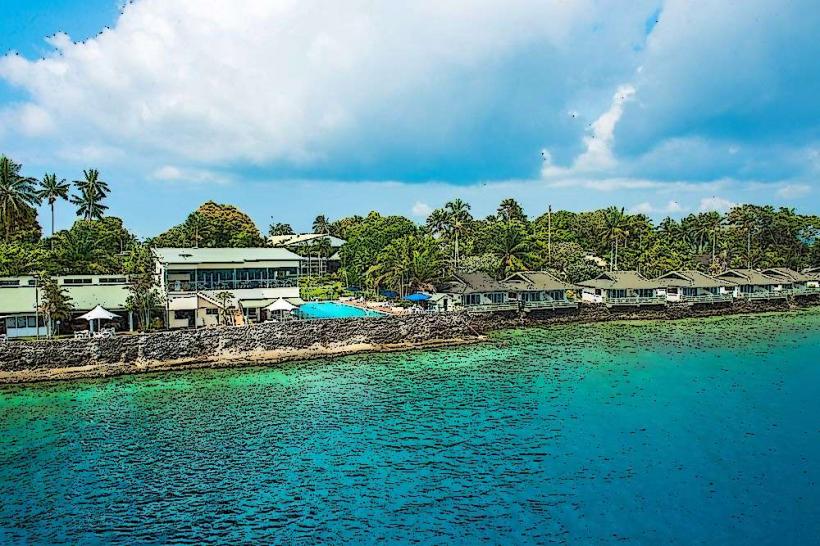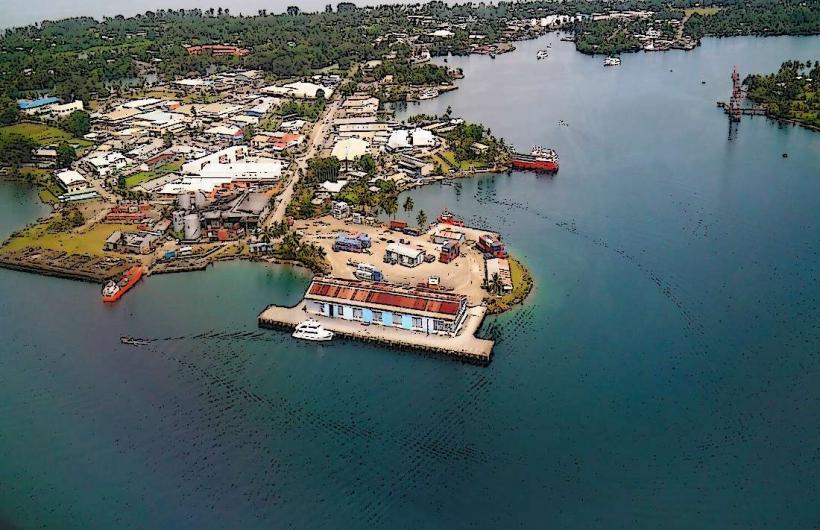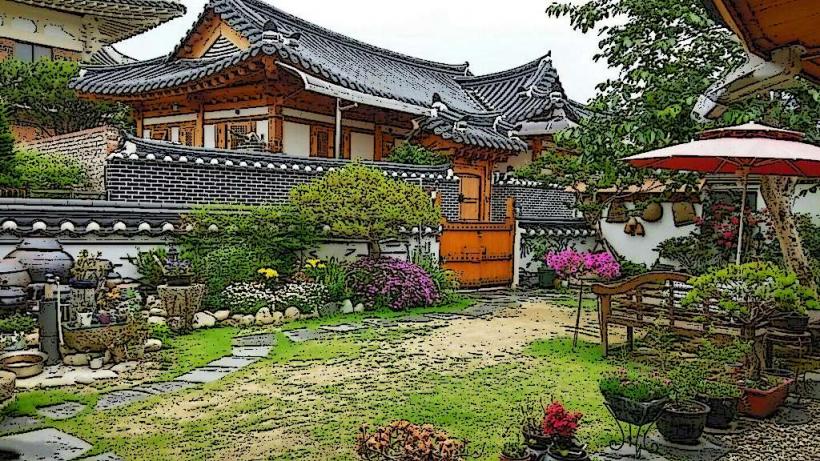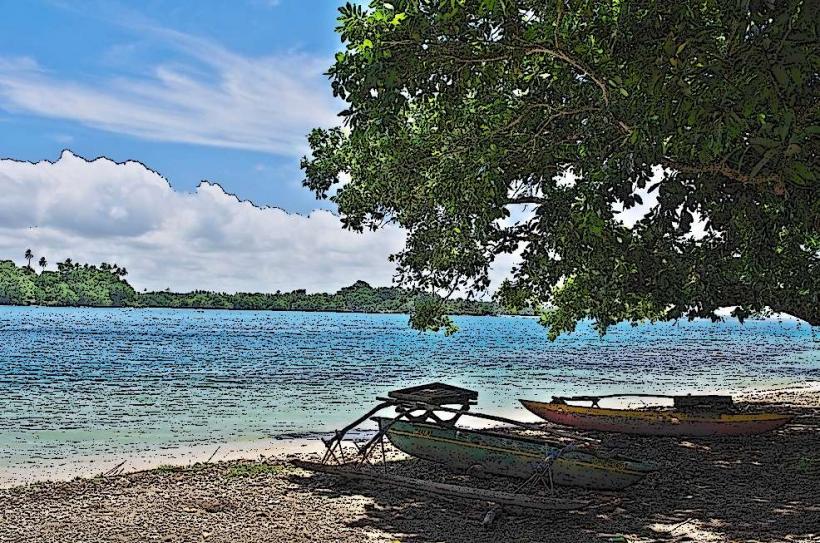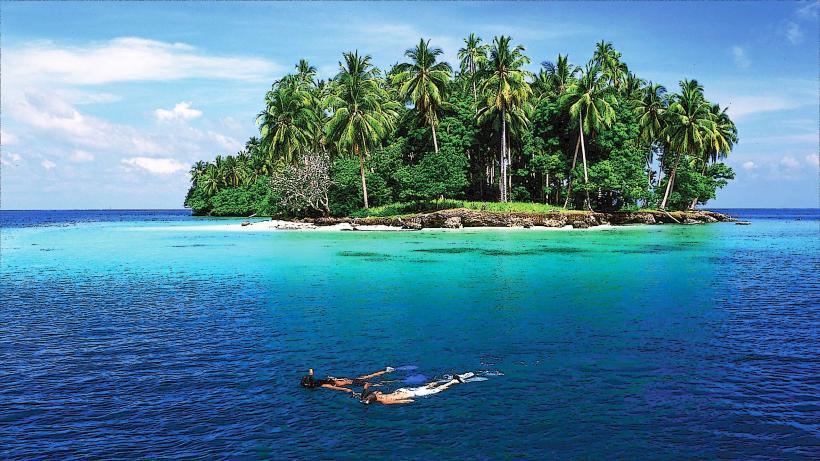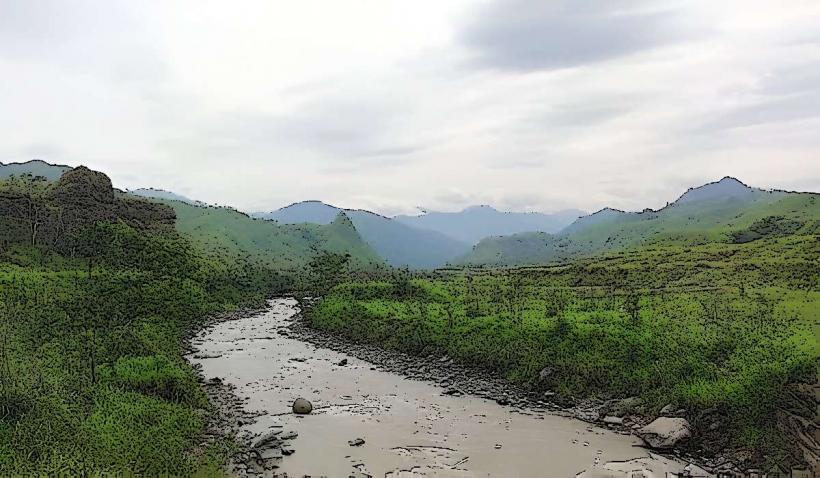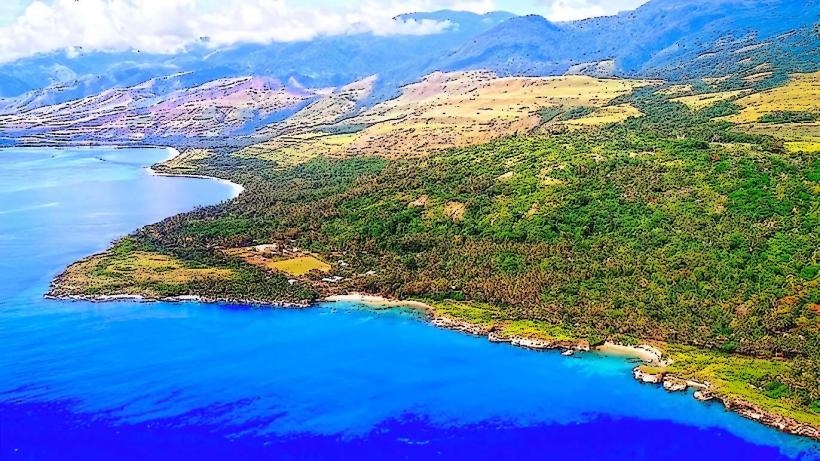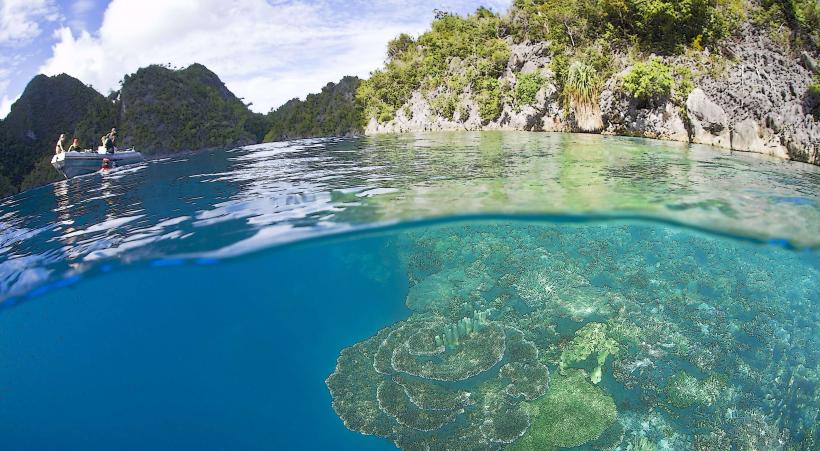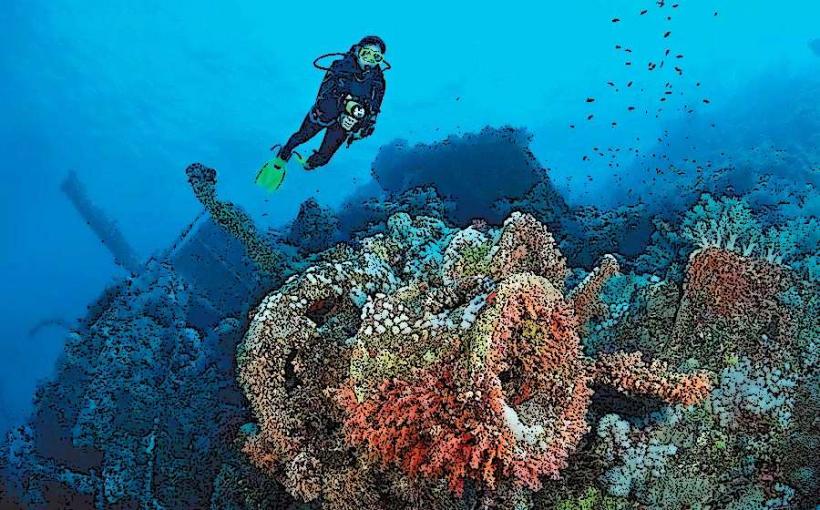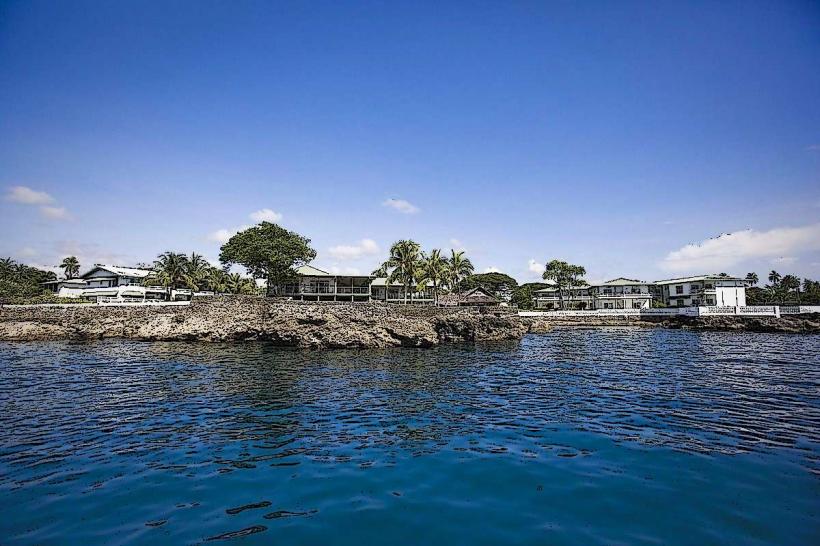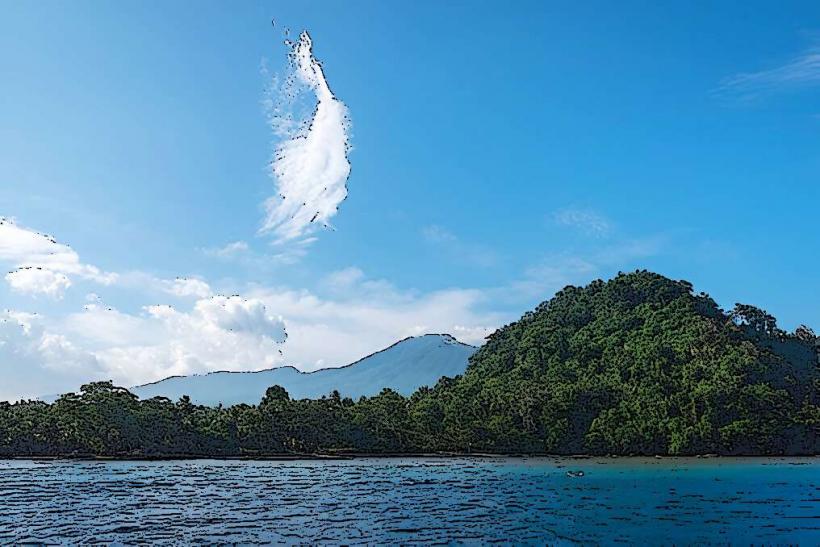Information
Landmark: Karkar islandCity: Madang
Country: Papua New Guinea
Continent: Australia
Karkar Island is a volcanic island located in Madang Province in Papua New Guinea (PNG). Situated in the Bismarck Sea, it is part of the Bismarck Archipelago, which includes other islands like New Ireland and New Britain. Karkar Island is known for its volcanic origin, rich biodiversity, and cultural significance to the indigenous communities that inhabit it. It is a remote and relatively less-explored destination, offering a unique combination of natural beauty and traditional Papua New Guinean life.
Geological Features
- Volcanic Origin: Karkar Island is an active volcanic island formed by the eruption of the Karkar Volcano, which is located at the center of the island. The island's volcanic nature gives it a dramatic landscape, with crater lakes, volcanic peaks, and steep slopes.
- Karkar Volcano: The Karkar Volcano is considered dormant but is part of the active volcanic arc that extends through PNG. The island has rich soils, a result of volcanic ash, which supports diverse vegetation. The crater lake in the volcanic caldera is one of the island’s most significant features.
- Lush Vegetation: Due to the volcanic soil, the island is covered with dense tropical rainforests and has a wealth of flora and fauna. The island's lush environment supports both wildlife and agricultural activities for local communities.
Biodiversity
- Flora: The island's tropical rainforests are home to a wide range of plant species, including fruit trees, cocoa, coffee, and coconut palms. The volcanic soil is fertile, which contributes to the island's abundant vegetation.
- Fauna: The island’s forests, beaches, and coral reefs support a variety of wildlife, including species of birds, insects, and marine life. It's not uncommon to encounter endemic species of birds, reptiles, and plants that are unique to the island or the region.
- Marine Life: The surrounding waters of Karkar Island feature pristine coral reefs, which are a haven for marine species, such as fish, sea turtles, and occasional sightings of manta rays and whale sharks. The waters are clear, making the island a good spot for scuba diving and snorkeling.
Cultural Significance
- Indigenous Communities: Karkar Island is home to several indigenous communities, whose cultures and traditions have been deeply shaped by the land and environment. These communities live in villages scattered across the island, practicing subsistence farming, fishing, and traditional cultural practices. They rely on the island's natural resources for food, shelter, and economic activities.
- Cultural Practices: The people of Karkar Island maintain many of their traditional customs, including dances, rituals, and ceremonies. The island’s cultural practices are often intertwined with its natural resources, as the people have a deep spiritual and cultural connection to the land and sea.
- Language: There are multiple languages spoken on Karkar Island, reflecting the diversity of the island's communities. Tok Pisin, Hiri Motu, and various local languages are commonly spoken, depending on the community.
Geographical Location and Access
- Proximity to Madang: Karkar Island is located northwest of Madang, one of Papua New Guinea's major towns. Madang is the closest city with commercial services, making it the primary gateway for travelers looking to reach Karkar Island.
- Access: Getting to Karkar Island generally involves boat travel from Madang or nearby coastal areas. The island does not have extensive infrastructure, so transport may be limited, and travelers typically rely on chartered boats or local ferries. This isolation contributes to the island's pristine environment but also means that access can be somewhat difficult for tourists.
- Size and Terrain: Karkar Island spans approximately 50 square kilometers and has a mountainous terrain, with volcanic peaks reaching over 1,500 meters in height. This makes for dramatic landscapes and offers opportunities for hiking and nature exploration.
Tourism and Attractions
- Crater Lake: One of the primary natural attractions of Karkar Island is its volcanic crater lake. The lake, located within the caldera of the Karkar Volcano, is surrounded by steep, forested slopes and offers a tranquil setting. It is a popular spot for eco-tourism, hiking, and photography.
- Diving and Snorkeling: The surrounding waters offer clear visibility, coral reefs, and abundant marine life. The reefs are often regarded as some of the most pristine in PNG, making the area ideal for scuba diving and snorkeling.
- Hiking: For adventure enthusiasts, hiking the island’s volcanic peaks provides spectacular views of the surrounding sea and islands. There are trails that lead to the top of the volcano, where hikers can see the caldera and enjoy panoramic views.
- Birdwatching: Karkar Island’s diverse ecosystems make it a haven for birdwatchers. The forests and coastal areas provide habitats for a variety of endemic and migratory bird species.
Agriculture and Economy
- Subsistence Farming: The island’s indigenous people rely heavily on agriculture for their livelihoods. They grow crops like coconut, cocoa, coffee, taro, yam, and sweet potato. Fishing also plays a significant role in the island's economy.
- Eco-Tourism Potential: Due to its pristine environment and relatively untouched nature, Karkar Island has great potential for eco-tourism. The local community benefits from eco-tourism by providing accommodations, guiding services, and cultural experiences for visitors, all while maintaining their traditional ways of life.
Challenges
- Infrastructure: Karkar Island remains underdeveloped in terms of infrastructure, with limited roads, electricity, and communication networks. This makes access challenging for tourists and can impact local living conditions.
- Environmental Sustainability: As tourism increases, there are concerns about the impact on the island's natural resources, particularly the coral reefs and marine ecosystems. Efforts to balance sustainable tourism with conservation are important to preserve the island’s ecological integrity.
Conclusion
Karkar Island is a unique and beautiful destination in Papua New Guinea, known for its volcanic origins, crater lake, and rich biodiversity. The island offers visitors a rare glimpse into the unspoiled beauty of PNG’s natural landscapes and the vibrant cultures of its indigenous people. While it remains relatively isolated, the island’s charm lies in its natural and cultural richness, making it a hidden gem for those seeking adventure, nature, and authenticity in the Pacific.

